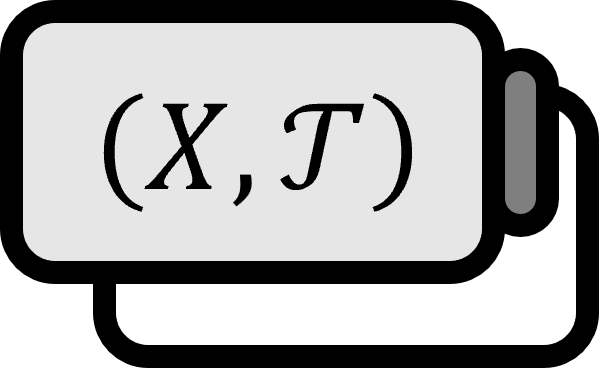Löb's Theorem Proof
Definition
Let $\mathscr{O}$ be an open cover of the metric space $(X,d)$.
$\sup \left\{ d(a,b) \ | \ a,b \in A \right\} < \varepsilon$ is said to be the Lebesgue Number for $\mathscr{O}$ if every subset $A \subset X$ that satisfies $\sup \left\{ d(a,b) \ | \ a,b \in A \right\} < \varepsilon$ also satisfies $A \subset O$ for some $O \in \mathscr{O}$.
Theorem 1
- [1] Lebesgue’s Lemma: If $X$ is sequentially compact, then for every open cover $\mathscr{O}$ of $X$, there exists a Lebesgue number.
- [2] Lebesgue’s Theorem: If $X$ is compact, then for every open cover $\mathscr{O}$ of $X$, there exists a Lebesgue number.
The concept of Lebesgue numbers might sound complicated, but it’s not as difficult as it seems if you think about it intuitively. Just the notation $\varepsilon > 0$ being used for it should remind us of something familiar. It’s helpful to remember that typically anything named after Lebesgue has to do with metric spaces.
Simply remembering that if it’s compact then it’s sequentially compact can clear up any confusion about what’s the theorem and what’s the lemma.
Proof
[1]
Assume that for every $\varepsilon > 0$, there exists an $x \in X$ such that $$ B_{d } ( x , \varepsilon ) \nsubseteq O \in \mathscr{O} $$ is satisfied.
Then for every $n \in \mathbb{N}$, there exists an $x_{n} \in X$ such that $$ B_{d } \left( x_{n} , {{1 } \over {n}} \right) \nsubseteq O \in \mathscr{O} $$ is satisfied. Since $\mathscr{O}$ is an open cover of $X$, there exist $\varepsilon_{n} >0$ and $x_{n} \in O_{n} \in \mathscr{O}$ that satisfy $B_{d} ( x_{n} , \varepsilon_{n} ) \subset O_{n}$. If for every $\displaystyle {{1} \over {m}} < \varepsilon_{n}$, $x_{n} = x_{m}$, then $$ B_{d } \left( x_{m} , {{1 } \over {m}} \right) = B_{d } \left( x_{n} , {{1 } \over {m}} \right) \subset B_{d } \left( x_{n} , \varepsilon_{n} \right) \subset O_{n} $$, thus, $x_{n} \ne x_{m}$ must be true. That is, $\left\{ x_{n} \ | \ n \in \mathbb{N} \right\}$ is an infinite set and, as $X$ is sequentially compact, $\left\{ x_{n} \ | \ n \in \mathbb{N} \right\}$ has a limit point $a \in X$. Since $\mathscr{O}$ is an open cover of $X$, there exists an open set $O$ that satisfies $a \in O \in \mathscr{O}$. Being an open set, there exists an $\delta > 0$ that satisfies $B_{d} (a , \delta ) \subset O$. Since $a$ is a limit point of $\left\{ x_{n} \ | \ n \in \mathbb{N} \right\}$, $\displaystyle B_{d} \left( a , {{\delta} \over {2}} \right)$ includes an infinite subset of $\left\{ x_{n} \ | \ n \in \mathbb{N} \right\}$. Therefore, $$ {{1 } \over {n_{0}}} < {{\delta} \over {2}} \\ x_{n_{0}} \in B_{d} \left( a , {{\delta} \over {2}} \right) $$ is satisfied by some $n_{0} \in \mathbb{N}$. However, for any $\displaystyle z \in B_{d} \left( x_{n_{0}} , {{1} \over {n_{0}}} \right)$, $$ d (a,z) \le d(a, x_{n_{0}} ) + d ( x_{n_{0 }} , z) < {{ \delta } \over {2}} + {{1} \over {n_{0}}} < {{ \delta } \over {2}} + {{ \delta } \over {2}} = \delta $$ thus, $$ B_{d} \left( x_{n_{0}} , {{1} \over {n_{0}}} \right) \subset B_{d} (a,\delta) \subset O \in \mathscr{O} $$, which is a contradiction to the assumption.
■
[2]
If $X$ is a metric space, then being compact is equivalent to being sequentially compact, therefore, $X$ is sequentially compact. By [1] Lebesgue’s Lemma, $X$ has a Lebesgue number.
■
Munkres. (2000). Topology(2nd Edition): p175. ↩︎
